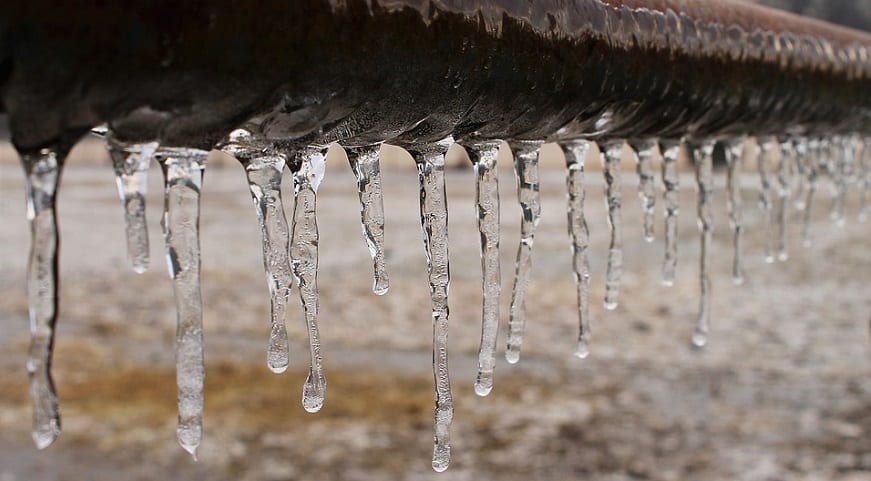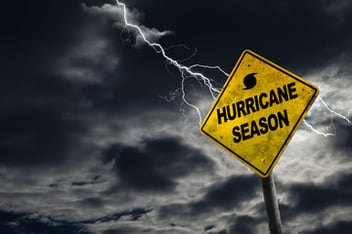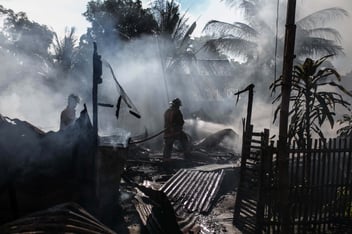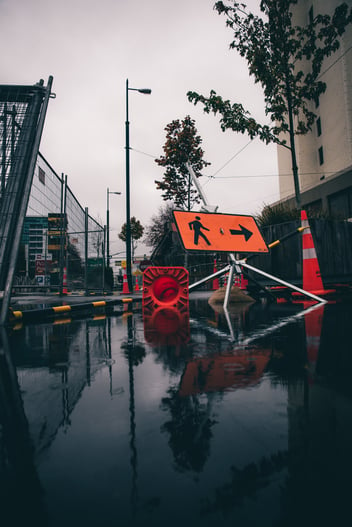When a severe cold front rolls in, one of the most vulnerable and expensive places in your home is your plumbing. As the water in your pipes freezes, it will expand, putting increasing pressure on the pipes until they cannot keep holding the ice and they burst.
If you only get a small trickle of water from your faucet and your toilet will not refill after flushing, this is a sign that they have frozen, and if you catch it early enough, you can defrost them before the pipes burst. Other warning signs of frozen pipes are strange smells coming from the faucet or drain, and the water not being the correct temperature on the water heater. You also might see frost on the pipes if it is severe enough.
Most Vulnerable Areas
While any pipes in your home can freeze, the ones most likely to do so are the outdoor lines, for a hose, sprinkler system, or swimming pool. Inside your home, the plumbing in unheated areas of the house are the most vulnerable. These include the pipes in exterior walls, basements, attics, garages, and sometimes even kitchen cabinets.
Preventing Frozen Pipes
In the fall, drain your water lines to your pool and sprinkler systems, and drain and remove the hoses outdoors. Close the supply values to the hoses. Do not put antifreeze in your water lines,
Insulate your attic, basement, and crawl space to keep the areas — and thus the pipes — warmer.
If you have pipes in your garage, keep those doors closed.
Open your kitchen and bathroom cabinets to allow more warm air to reach them, and if the cold is bad enough, let the cold water drip from the pipe — it can help keep them from freezing.
If you usually turn down your heat at night, do not do that. Keeping the temperature the same will help keep your pipes from getting too cold while you are sleeping. Ideally, keep the house at 65 degrees minimum.
Have a plumber come out and survey your plumbing in autumn, to make sure there are no small things that need fixing, which can help mitigate the little things getting bigger. If you do this, document everything, just in case your pipes freeze and burst, and you need to make an insurance claim.
You can purchase freeze alarms that will send alerts to your phone if your home temperature drops below 45 degrees so you can get the area warmed up quickly.
Thawing a Frozen Pipe
As soon as you discover the frozen pipe, shut off the water supply to the area. Use a space heater, hairdryer, or a heat lamp, or wrap the pipe in thermostatically controlled heat tape; in a pinch, wrapping hot towels around the pipes can be affective. While you work to thaw the pipes, make sure you have towels and a mop handy, in case a leak follows the thaw. Thawing out the pipes can take some time, but make sure you keep an eye on it in case the pipes unleash a leak when the ice is no longer there to keep it stoppered.
Before you begin trying to thaw the pipes, open the faucets they go to, both hot and cold.
If you do not feel comfortable thawing the pipe yourself, you can contact a plumber to thaw it for you. They can also provide you with a quote for repairs if a leak occurs.
Do not use a propane torch to thaw your pipes, this is a major fire risk.
Will My Insurance Cover It?
Most insurance companies do cover damages from frozen pipes, but not every single policy does. You will need to read your policy or contact your insurance agent to get more information on what your policy will cover. You may still need to pay out of pocket for some of the repairs, as your insurance policy may not cover everything.




 Storm Damage
Storm Damage  Property Damage
Property Damage Appraisal Services
Appraisal Services Contact Us
Contact Us




.jpg)
 claims@ucspa.com
claims@ucspa.com Mon-Fri: 9:00am-5:00pm
Mon-Fri: 9:00am-5:00pm